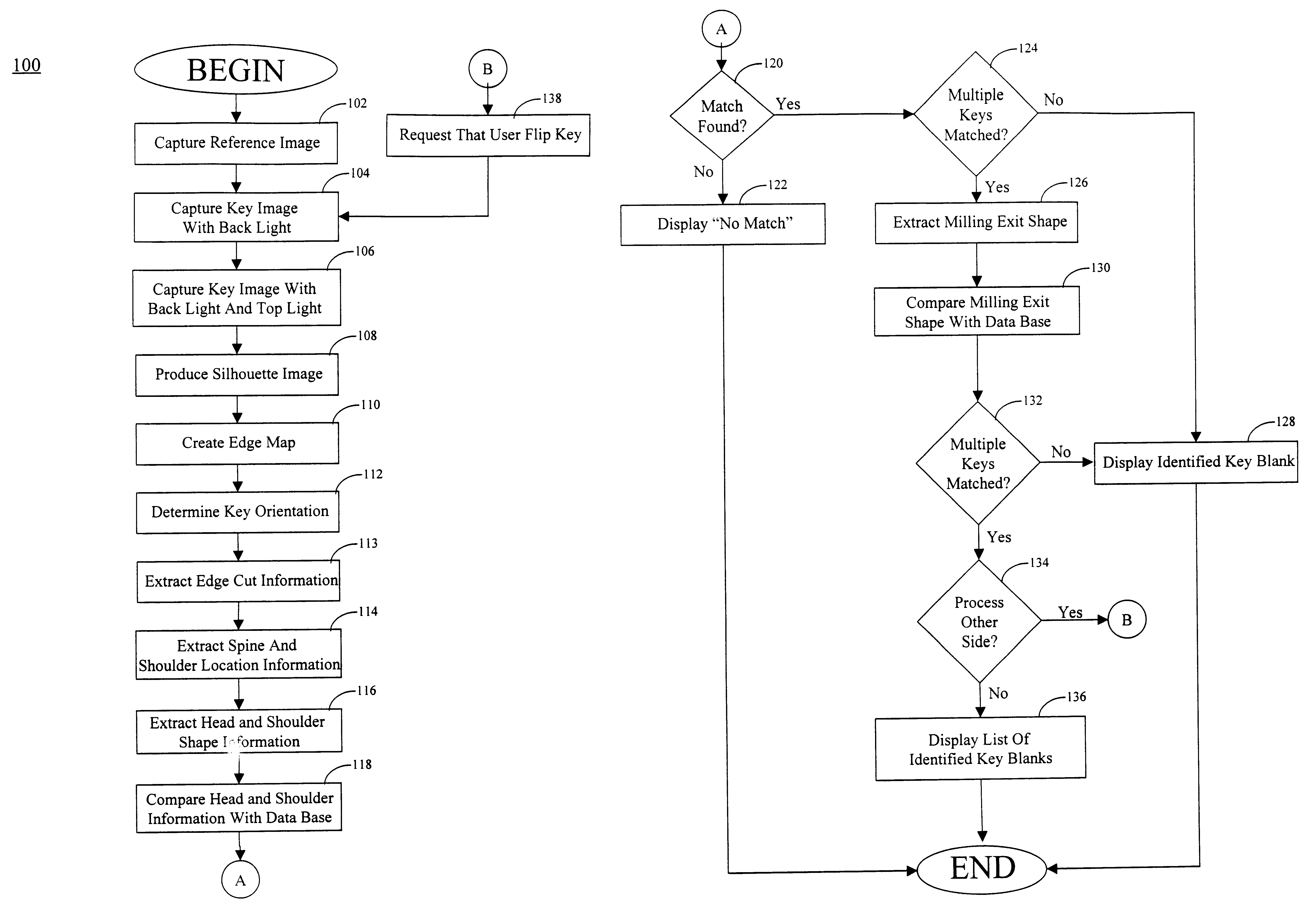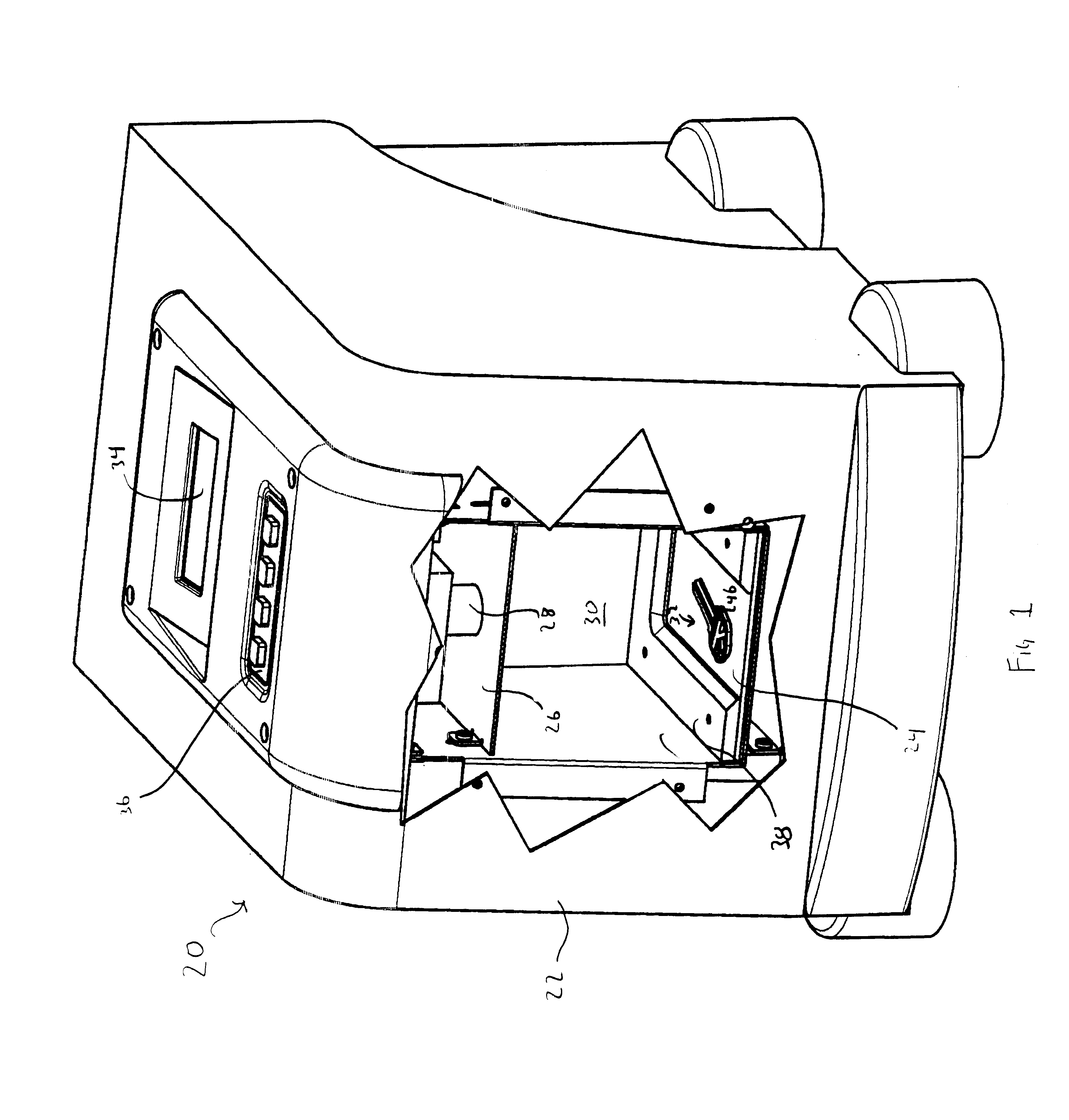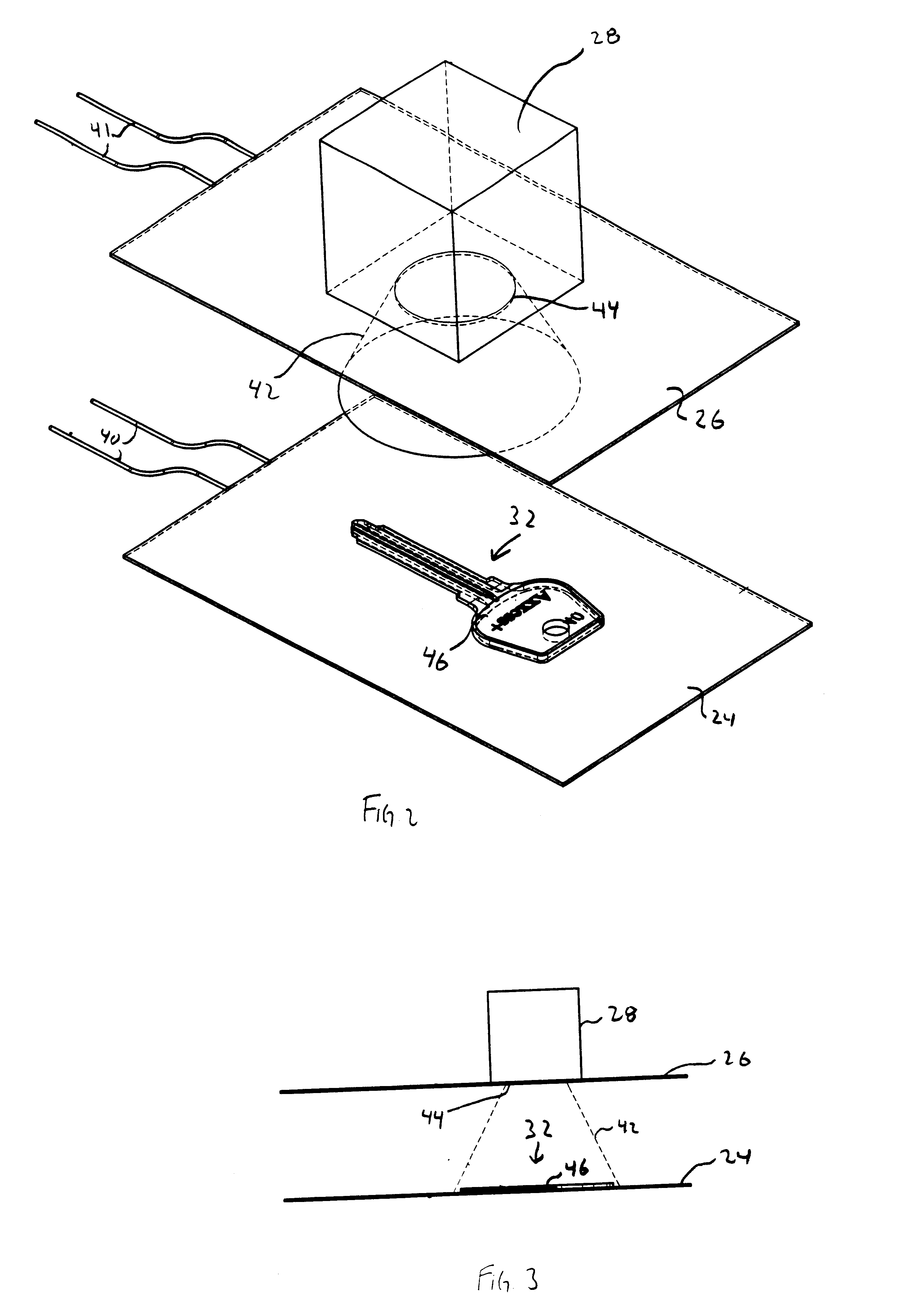Key identification system
a key identification and key blade technology, applied in the field of key identification systems, can solve the problems of inability to determine the shape of the key blade surface, inability to extract all the information about the master key needed, and inability to effectively operate the corresponding lock
- Summary
- Abstract
- Description
- Claims
- Application Information
AI Technical Summary
Benefits of technology
Problems solved by technology
Method used
Image
Examples
Embodiment Construction
Reference will now be made in detail to the presently preferred embodiments of the present invention, examples of which are illustrated in the accompanying drawings. Wherever possible, the same reference numbers will be used throughout the drawings to refer to the same or like parts. An exemplary embodiment of a system for identifying a master key according to the present invention is shown in FIG. 1 and is designated generally by reference number 20.
Key blanks are made in a variety of sizes and shapes, each of which is configured to ultimately operate a particular type of lock. To identify the key blank corresponding to a master key, the master key must be analyzed to obtain identifying information about the master key that will uniquely identify the corresponding key blank.
FIGS. 6a, 7a, and 8a illustrate several exemplary master keys. For purposes of simplicity, the master keys are illustrated without a bitting pattern. As shown, each master key 32 has a head 64, a shoulder area 7...
PUM
 Login to View More
Login to View More Abstract
Description
Claims
Application Information
 Login to View More
Login to View More - R&D
- Intellectual Property
- Life Sciences
- Materials
- Tech Scout
- Unparalleled Data Quality
- Higher Quality Content
- 60% Fewer Hallucinations
Browse by: Latest US Patents, China's latest patents, Technical Efficacy Thesaurus, Application Domain, Technology Topic, Popular Technical Reports.
© 2025 PatSnap. All rights reserved.Legal|Privacy policy|Modern Slavery Act Transparency Statement|Sitemap|About US| Contact US: help@patsnap.com



